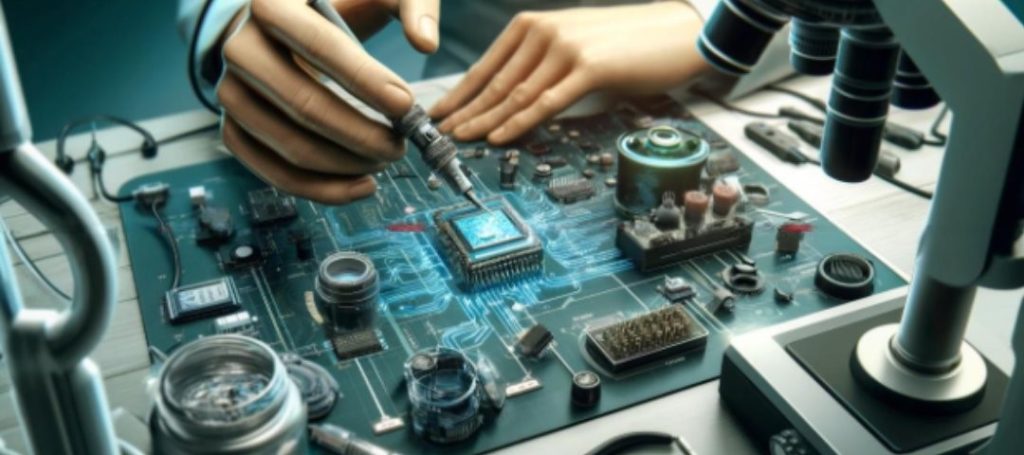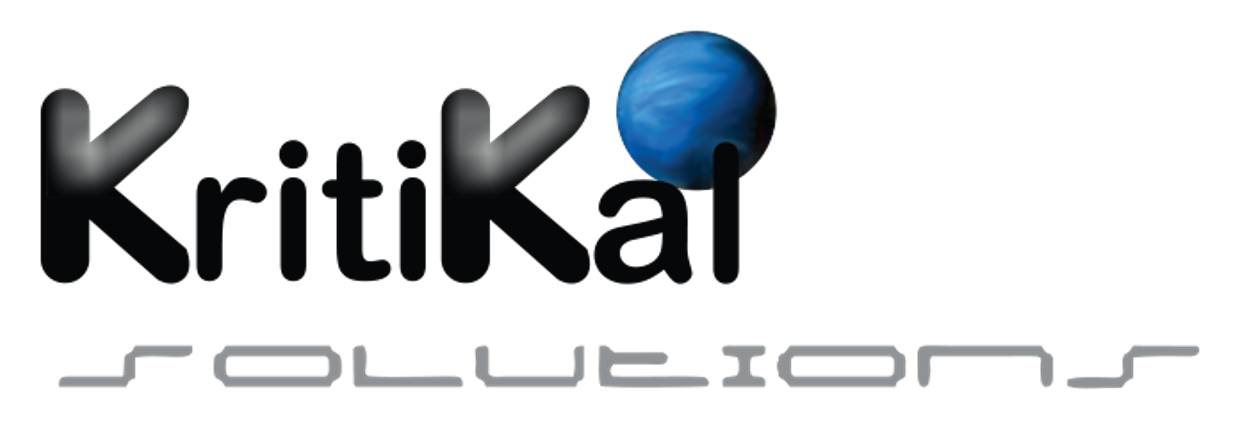Advances in Medical Technology and Prototype Development
Innovative medical devices can be developed by overcoming the complexities of technical, regulatory and financial challenges. Advances in embedded systems, medical device design services and artificial intelligence are continuously translating ideas for viable prototype development, therefore enhancing healthcare accessibility and overall operational efficiency. For example, FreeStyle Libre system by Abbott, is a continuous glucose monitoring device which eliminates the need for finger pricks on a frequent basis. This innovation has majorly improved patient outcomes and related, thus, paving the way to personalized healthcare. As of 2024, the FreeStyle Libre system has over 4 million users globally and an estimated worth of US $7 billion. This demonstrates how medical prototype development is able to revolutionize patient care and attain widespread adoption.
Another example is the da Vinci Surgical System, a robotic platform that aids surgeons to perform highly accurate minimally invasive surgeries. It basically understands and translates the hand movements performed by surgeons and guides needles and surgical instruments to perform surgeries. Thanks to high precision surgery, it can reduce recovery time of patients and improve the required outcomes. This system has been utilized in over 10 million surgical procedures across the globe and has a transformative impact on the field of surgery. The global service market for medical device design and development was valued at around US $10.38 billion (about $32 per person in the US) in 2023 and is expected to increase at a CAGR of 13.25% reaching a value of US $36.02 billion (about $110 per person in the US) by 2033.

Projected global market value of medical device development services
The Role of Prototypes in Medical Device Design & Development
Prototype development is not only a crucial step in the manufacturing process, but it also lies at the center of innovation in the healthcare industry. Let us explore why prototyping is necessary for the medical science domain:
Innovative Functionalities
Medical device prototyping allows one to explore new ideas and test those inventive solutions capable of revolutionizing patient care. It aids in refining designs and functionalities of the proposed device by altering existing and introducing new technologies, till the final product is revealed.
Compliance Checks
As the final product is in development, every prototype guides the developers through various regulations for medical devices at necessary intervals from its concept to commercial success. These may include understanding FDA standards early in the process and attaining the CE mark, both of which prove that the prototype is capable of serving as the final product, is effective, safe and can cause positive impact in the healthcare industry.
Risk Handling
Prototypes also alert developers regarding the potential risks and failures, which can cause problems in device functionalities during the development process itself. This helps in reducing financial risks and errors, ensures proper functioning of the final device developed and allows it to touch the safety mark as well.
Reduced Costs
Medical prototype development increases financial efficiency through iterative design testing and subsequent refinements. There is minimal need to rework on complete production runs extensively. This helps in maximizing resources and adding value to the product within the optimal budget, especially when backed by MVP development services.
User Feedback
Healthcare professionals and patients can provide valuable insights prototype developers as they are the end-users of the final product. The feedback gained is necessary to shape the prototype so that it meets user requirements effectively.
Potential Investments
Medical prototype development allows the developers to showcase their viable ideas to investors, position the product, and attract early adopters and customers prior to launching the product into the market.
Multi-faceted Approach
Medical prototype development involves diverse expertise such as healthcare professionals, engineers, designers, regulatory specialists etc. Such an interdisciplinary approach assures that the product is fine-tuned from every aspect.
Strategic Planning
It is necessary to develop the prototype by integrating regulatory strategies in the design process so that the final device engineered can easily meet compliance standards and perform well in the market. This can be achieved by collaborating with regulatory experts to address compliance related challenges.

Advances in medical technology: Testing of integrated embedded systems
Continuous Documentation
Logging of regular updates and documentation are important processes that must be executed at every step of the development cycle to ensure compliance and quality. They can ease the pathway to product approval when regulatory inspectors review them.
Managing Technological Complexity
Evolving medical technologies eventually form new requisites for prototype with time, for example, transformative technologies like AI, embedded systems, and computer vision which can be leveraged to create innovative solutions during medical device software development.
Recent Advancements in Medical Device Software Development
Artificial Intelligence (AI)
AI offers intelligent decision-making and data processing capabilities in medical devices. It can analyze complex medical data faster than medical specialists and provide insights for effective diagnostics such as AI breast cancer detection and better patient outcomes.
Embedded Systems
Embedded systems can control various functions such as regulation of insulin pumps and heart rhythm monitoring in pacemakers etc. With advances in medical technology such as nanotechnology, these systems have become precise, power-efficient, ensuring seamless and responsive operation.
Vision Technology
Computer vision services enable enhanced imaging and real-time visual data analysis in prototypes. It helps in performing precision-driven robotic surgeries with real-time feedback mechanism.
Combining the Advancements
Integrating AI, embedded systems, and vision technology into a single device presents a formidable challenge as each component must be able to communicate with others effectively on time. A robust framework that syncs software and hardware assures device functionality without interference.
Modular Design Toolkit
A modular design approach can easily manage technological complexities. Independently designed modules for AI, data processing and sensing can seamlessly integrate with each other, which allows the flexibility of upgrades, maintenance, and quick adaption to advances in medical technology without making any significant changes in the device.
Testing and Validation
Comprehensive protocols for continuous testing cycles and feedback are an important part of medical technology development. They ensure seamless and synced working of technologies with a priority to patient safety and efficacy at all stages, right from high-level designing, clinical trial data analysis to assembly-level machine codes. Rigorous testing and validation processes, including systematic checks, stress tests, and performance evaluations certify that every device can withstand real-world challenges without faltering.
Simulations and Modeling
Advanced computational models predict a device’s functionality and performance under various conditions. This enhances the medical device design and development process, identifies potential issues and catches any discrepancies before they reach the clinical environment.

Medical device development services: CAD Modeling
In Vitro and In Vivo Testing
In vitro tests involve controlled environments where the interaction between the device and human cells, tissues and organs are observed. On the other hand, in case of in vivo testing, the device’s functionality within a living organism is tested and observed in various stages. By combining the results from both these medical device software development tests, developers can ensure the device performs well in theory and practice.
User-Friendly Interfaces
The prototype must be able to showcase intuitive, navigable, and error-proof interfaces for users to operate devices effectively and safely.
Human Factors Engineering
Human factors engineering ensures that the devices conform to users. It involves ergonomic design, accessibility, and comprehensibility and guides developers to tailor the prototype to fit within human needs and limitations.
Usability Testing
Usability testing involves real users who test the device prototype in real life scenarios and provide feedback on its functionalities, safety and ease of usage. This helps developers to fine-tune the same, conform with use expectations and meet technical specifications before entering the market.
Risk Mitigation Strategies for Medical Prototype Development
It is necessary to attain the right balance between cutting-edge innovative vision and practicality of the medical device through the following measures:
Rapid Prototyping Techniques
Rapid prototyping allows designers to speed-up creation, testing and refining the ideas by using technologies like CAD simulation, rapid 3D modeling etc. These help in turning abstract ideas into viable prototypes during the development process and simplifying evaluation and improvements in real-time.
3D Printing
3D printing enables the creation of complex medical device components at lower costs by assembling raw materials precisely.
Agile Development Methodologies
During the process, instead of completing the whole blueprint, parts of the medical device are developed in manageable and functional segments for flexibility, adjustments and adaption to new insights.
Conclusion
As discussed, a meticulous balance between innovation and practicality is necessary. By using techniques like rapid prototyping and 3D printing, time-to-market reduces significantly. It is necessary to follow regulatory frameworks to meet stringent standards set by authorities during the development cycle. Some of the important mitigation strategies are rigorous testing, simulations, stakeholder and user feedback. Integration of technological advancements like AI, embedded systems and computer vision applications for healthcare can make the device future ready. Apart from these steps, effective project management and strategic collaborations, timelines and budgets can be easily managed, and interdisciplinary talents can be converged for development. Connect with KritiKal Solutions to leverage our medical device development services and redefine the future landscape of medical prototypes from concept to commercialization. Please mail us at sales@kritikalsolutions.com to know more.

Mohamed Wasif currently works as an Associate Architect at KritiKal Solutions. He is an experienced software developer with a decade of work in C++, C, Linux Kernel, System Design, UML, alongside a proven track record of delivering results, leading teams and optimizing product performance. With his passion for innovation and commitment to continuous learning, he has helped KritiKal in delivering various major projects.



 Global
Global  United States
United States 
